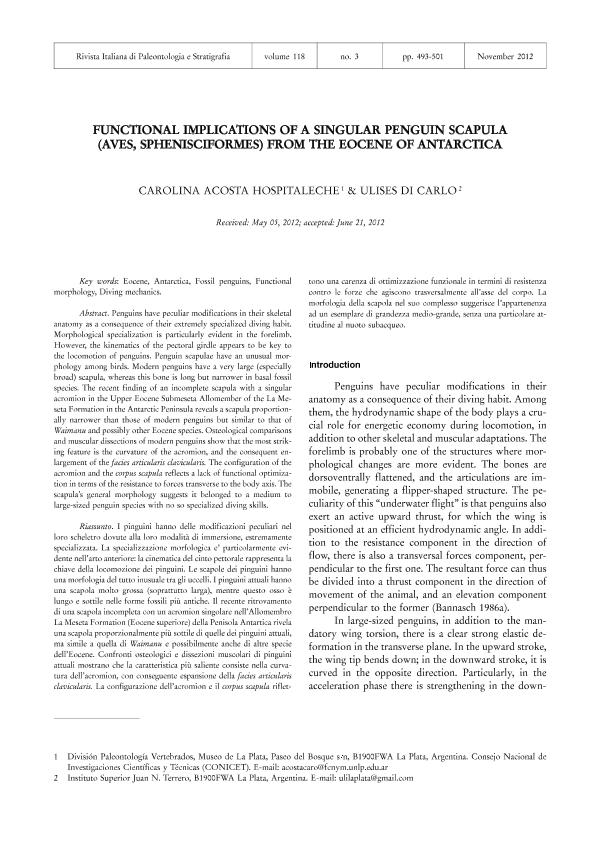Artículo
Functional implications of a singular penguin scapula (Aves, Sphenisciformes) from the Eocene of Antarctica
Fecha de publicación:
03/2012
Editorial:
Università degli Studi di Milano
Revista:
Rivista Italiana Di Paleontologia E Stratigrafia
ISSN:
0035-6883
Idioma:
Inglés
Tipo de recurso:
Artículo publicado
Clasificación temática:
Resumen
Penguins have peculiar modifications in their skeletal anatomy as a consequence of their extremely specialized diving habit. Morphological specialization is particularly evident in the forelimb. However, the kinematics of the pectoral girdle appears to be key to the locomotion of penguins. Penguin scapulae have an unusual morphology among birds. Modern penguins have a very large (especially broad) scapula, whereas this bone is long but narrower in basal fossil species. The recent finding of an incomplete scapula with a singular acromion in the Upper Eocene Submeseta Allomember of the La Meseta Formation Peninsula (Antarctica) in the Antarctic Peninsula reveals a scapula proportionally narrower than those of modern penguins but similar to that of Waimanu and possibly other Eocene species. Osteological comparisons and muscular dissections of modern penguins show that the most striking feature is the curvature of the acromion, and the consequent enlargement of the facies articularis clavicularis. The configuration of the acromion and the corpus scapula reflects a lack of functional optimization in terms of the resistance to forces transverse to the body axis.The scapula´s general morphology suggests it belonged to a medium to large-sized penguin species with no so specialized diving skills.
Palabras clave:
Spheniscidae
,
Eocene
,
Antarctica
,
Functional Morphology
Archivos asociados
Licencia
Identificadores
Colecciones
Articulos(CCT - LA PLATA)
Articulos de CTRO.CIENTIFICO TECNOL.CONICET - LA PLATA
Articulos de CTRO.CIENTIFICO TECNOL.CONICET - LA PLATA
Citación
Acosta Hospitaleche, Carolina Ileana Alicia; Di Carlo, Ulises; Functional implications of a singular penguin scapula (Aves, Sphenisciformes) from the Eocene of Antarctica; Università degli Studi di Milano; Rivista Italiana Di Paleontologia E Stratigrafia; 118; 3; 3-2012; 493-501
Compartir
Altmétricas




